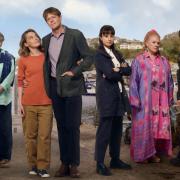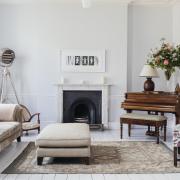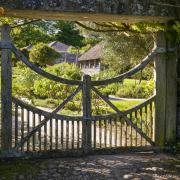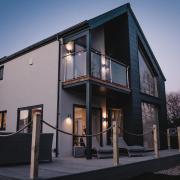We look at the history of glasses in the September issue and discover that they have changed quite a lot over the years
Be Spectacled!
We have come a long way from the days when glasses were taped onto your hat
Most historians believe that glasses were developed over a period of time, emerging towards the end of the 13th century, primarily for use by monks and scholars. It was probably the invention of the printing press in 1452 and the growing availability of books which prompted the mass production of inexpensive spectacles sold by peddlers. These early spectacles, however, were nothing like modern glasses. The first glasses had no sides and were either hand-held or balanced on the bridge of the nose by holding the head back slightly! Early spectacle-makers were baffled by the problem of how to keep glasses on the face. Various spring principles were applied to hold the spectacles to the nose, a tape tucked under the hat was yet another modification, but eventually rigid sidepieces were developed around 1730.
At the turn of the century, spectacles began to be seen as a stylish accessory rather than purely functional. Pince nez were a popular choice for ladies who did not want to be seen to be wearing glasses, as they were rimless and clipped discreetly onto the nose. Lorgnettes, a kind of eyeglass held up to the eye by a handle, were also considered most genteel. For gentlemen of the period, monocles were commonly used, but with their rakish image, these were more of a fashion statement than an object of practical use.
Considering their rather humble beginnings, spectacles have come a long way. Today, we have a huge array of frames and lenses to choose from. With almost all the major fashion houses, motor companies and even rock bands giving their names to designer frames, the image of glasses has never been better.
Choosing the right pair of frames can be difficult enough when, according to the experts, face shape, hair and colouring should all be taken into consideration. Lifestyle will also affect choice. If you work in an office, for example, you may want to choose lenses with a special anti-reflective coating that helps reduce the glare of artificial lighting.
Reactolite lenses can be useful if you want a pair of glasses and sunglasses rolled into one. These are clear indoors but darken quickly as you step into the sun. If you play sport you might want to consider a memory metal frame, which is completely bendable so you can just throw your glasses in your kit bag and forget about them. If comfort is your priority, the latest lightweight lenses may be just what you need.
As we get older, we lose some elasticity in the lens of our eye, making it difficult to adjust our focus, a condition known as presbyopia. With single-vision lenses, everything beyond the reading area is blurred so you have to switch spectacles or peer over your reading glasses to see distant objects. Bifocals are better, as near and distant objects are clear while the area in between can be blurred. Unlike bifocals, varifocal lenses have three main focal areas blended into one, giving effortless sharp vision at every distance and no unflattering line across your glasses - marvellous!
So what styles are big at the moment in eyewear? Interestingly, a lot of people are choosing rimless or semi-rimless frames, similar to the pince nez worn by women a hundred years ago. As often happens, fashion has turned full circle. For those of us who want to make a statement, chunky acetate frames are still at the height of popularity, as are retro frames and, conversely, a futuristic look with vivid use of colour.
Whatever you do, pick carefully. A well-chosen pair of spectacles will reflect your personality and bring out the character in your face.
JOANNA HAYWOOD


























